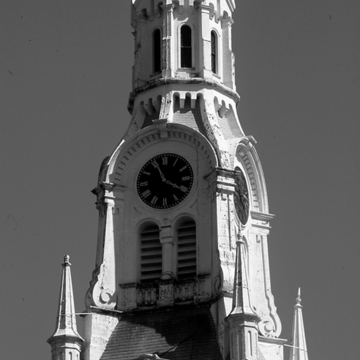An excellent example of the midcentury use of Romanesque architecture as an inspiration for American buildings, the First Congregational Church is a well-preserved work of a prolific church architect from Boston. With round arches, wall buttresses, and corbel tables beneath its cornices, the church design synthesizes Italian Lombard Romanesque and German Romanesque (Rundbogenstil) sources. The church was originally finished to simulate brownstone: its tongue-and-groove siding was beaded to resemble stone courses and it was stained brown. Inside, the sanctuary remains virtually intact. The First Congregational Church was established in 1642, leading to the incorporation of the town of Woburn one month later.
You are here
First Congregational Church
If SAH Archipedia has been useful to you, please consider supporting it.
SAH Archipedia tells the story of the United States through its buildings, landscapes, and cities. This freely available resource empowers the public with authoritative knowledge that deepens their understanding and appreciation of the built environment. But the Society of Architectural Historians, which created SAH Archipedia with University of Virginia Press, needs your support to maintain the high-caliber research, writing, photography, cartography, editing, design, and programming that make SAH Archipedia a trusted online resource available to all who value the history of place, heritage tourism, and learning.















